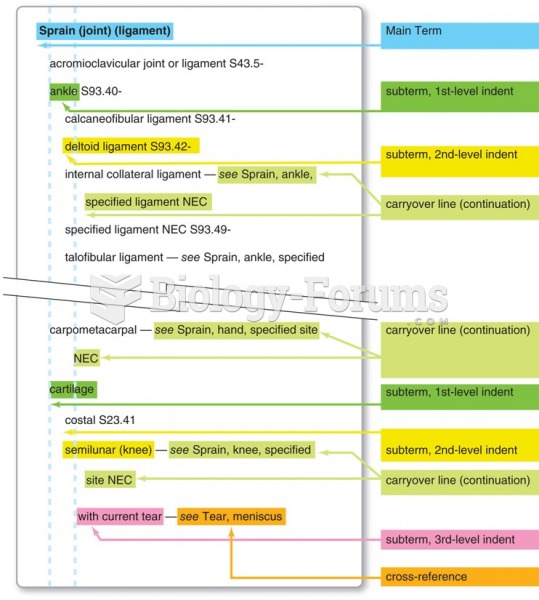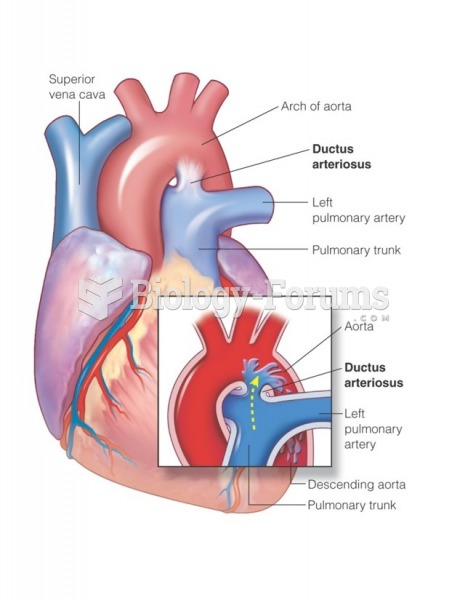|
|
|
More than 34,000 trademarked medication names and more than 10,000 generic medication names are in use in the United States.
The people with the highest levels of LDL are Mexican American males and non-Hispanic black females.
Many of the drugs used by neuroscientists are derived from toxic plants and venomous animals (such as snakes, spiders, snails, and puffer fish).
Women are 50% to 75% more likely than men to experience an adverse drug reaction.
Many people have small pouches in their colons that bulge outward through weak spots. Each pouch is called a diverticulum. About 10% of Americans older than age 40 years have diverticulosis, which, when the pouches become infected or inflamed, is called diverticulitis. The main cause of diverticular disease is a low-fiber diet.







